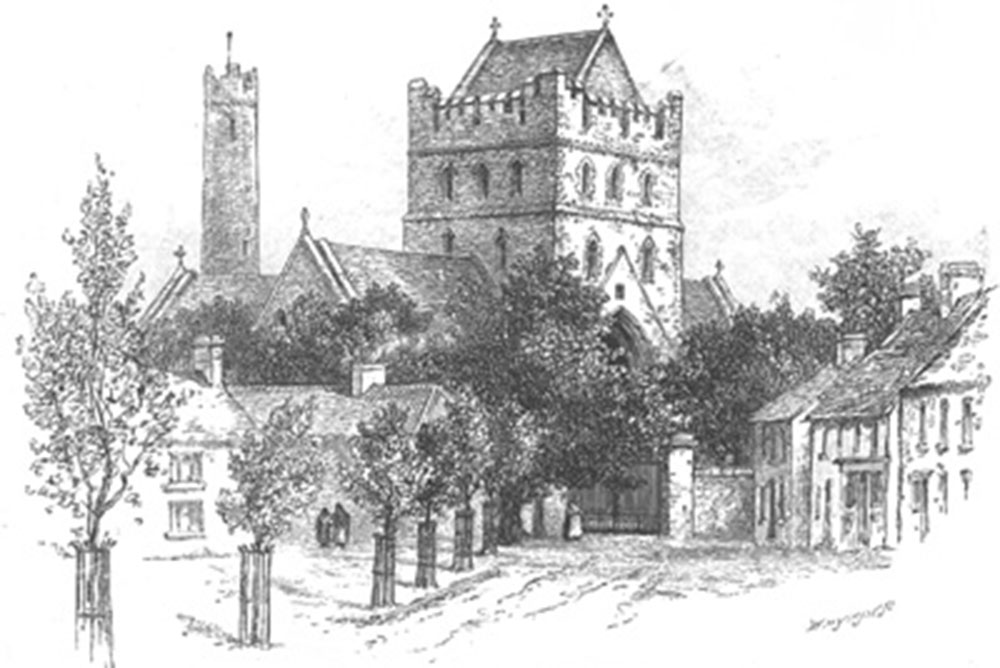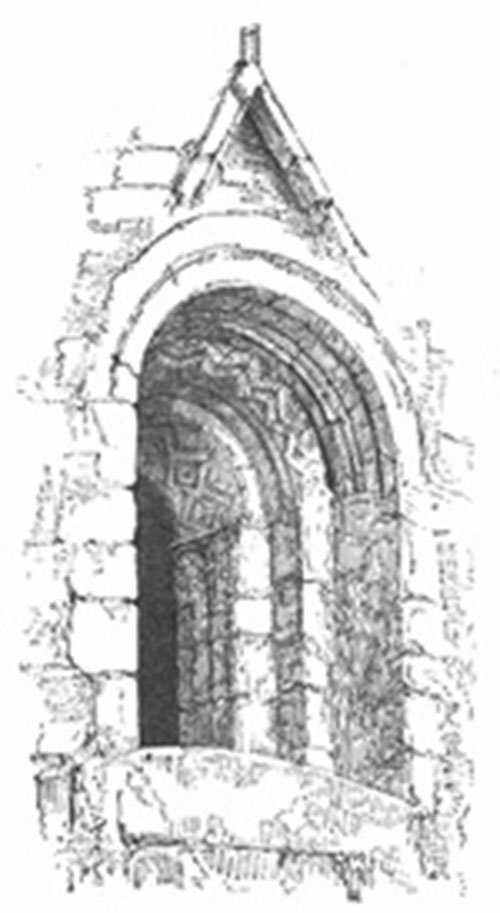From Dublin to Cork - Irish Pictures (1888)
From Irish Pictures Drawn with Pen and Pencil (1888) by Richard Lovett
Chapter IV: From Dublin to Cork
« Previous Page | Book Contents | Next Page »
THE trip from Dublin to Bantry is made by the main line of the Great Southern and Western Railway as far as Cork, and by this route some very beautiful country and some famous places are seen. Kilkenny and Cashel, Kilcolman and Youghal, Cork and Queenstown, the Golden Vale and Bantry Bay all lie either in our path or can be seen with a very slight expenditure of time and trouble.
The first stopping-place of the fast express is at Kildare, the Church of the Oak, the place where, under the shelter of an oak many centuries ago, St. Brigid built her cell. She was born near Dundalk, about 450 A.D., and founded in 484 a great religious house at Kildare, consisting of both monks and nuns. It is said that from the sixth to the thirteenth centuries, a fire, lighted by Brigid, was kept burning. The site of the cell in which it burned is still pointed out. She died about 525. For ages past a cathedral, dedicated to her, has stood on an elevated site in the town. On the dissolution of the religious houses it fell into a ruined condition, but in recent years attempts have been made to restore, or rather to rebuild it. The tower has been rebuilt and the nave is roofed in. The choir is now used as a parish church; but although much has been done to the nave and tower, they are yet very far from completion. Close by the church stands the round tower. It has been restored at the top, but unfortunately a turreted parapet has been substituted for the correct conical roof. The tower is in good preservation, is 130 feet high, and has a doorway which exhibits unusual features of interest. It is about fifteen feet from the ground, and consists of three concentric arches, ornamented with fine zig-zag mouldings. From the churchyard a fine view to the north and west is obtained, a conspicuous feature being the Chair of Kildare, a limestone mass on the hill called Grange.


